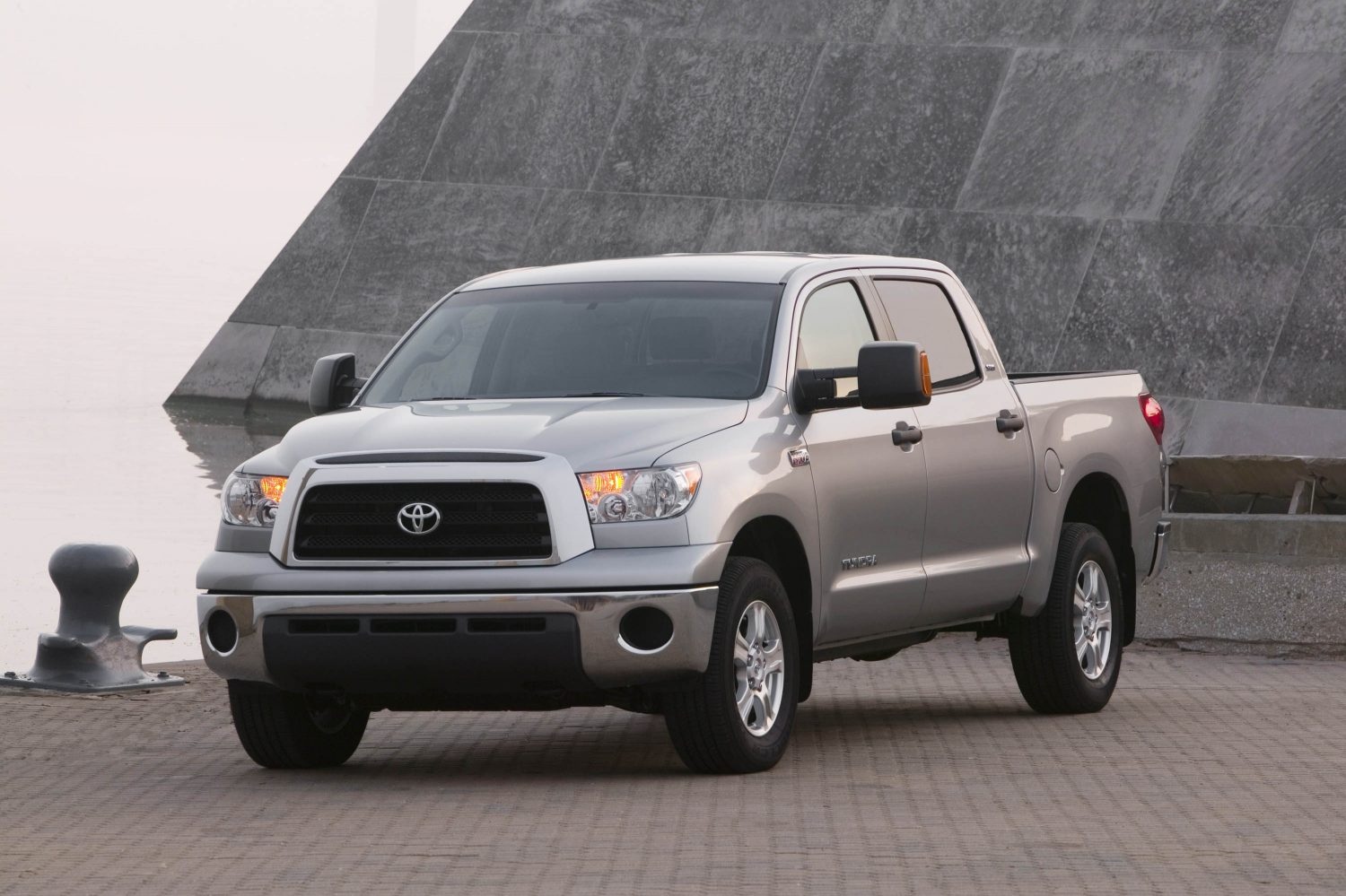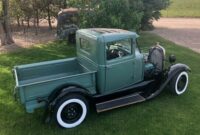Trucks For Sale Under $2500: Your Guide to Affordable Utility pickup.truckstrend.com
The idea of owning a pickup truck often conjures images of powerful V8 engines, gleaming chrome, and price tags that easily clear $40,000. But what if your budget is closer to a couple of grand? Is it possible to find a functional, reliable truck for under $2500? The answer is a resounding "yes," but it comes with a crucial caveat: realistic expectations and a willingness to get your hands dirty, or at least have a trusted mechanic on speed dial.
This comprehensive guide is for anyone considering a truck in this ultra-budget category. Whether you’re a student needing to haul gear, a small business owner on a shoestring budget, a DIY enthusiast, or simply someone who occasionally needs to move furniture or bags of mulch, a truck under $2500 can be an incredibly valuable asset. It’s not about luxury; it’s about pure utility, a workhorse that saves you rental fees and expands your capabilities without breaking the bank. This segment of the market demands patience, shrewd observation, and a solid understanding of what you’re getting into, but the rewards—a functional truck for a minimal outlay—can be well worth the effort.
Trucks For Sale Under $2500: Your Guide to Affordable Utility
Why Consider a Truck Under $2500? The Appeal of the Ultra-Budget Hauler
For many, the allure of a truck under $2500 isn’t just about affordability; it’s about practicality and a unique set of benefits that higher-priced vehicles simply don’t offer.
- Unbeatable Affordability: This is the most obvious benefit. For the price of a few months’ car payments, you can own a vehicle that can perform heavy-duty tasks. This makes it ideal for first-time truck owners, those on a very tight budget, or individuals who only need a truck occasionally.
- Pure Utility: These trucks are stripped down to their essential purpose: hauling. They are perfect for landscaping, moving furniture, going to the dump, carrying building materials, or serving as a dedicated work vehicle for tradespeople.
- Lower Ownership Costs (Initially): Besides the low purchase price, older trucks often have lower insurance premiums and cheaper registration fees compared to newer models. Depreciation has already taken its toll, so you won’t lose much value.
- Learning Experience: Buying an older, budget-friendly truck can be a fantastic way to learn basic automotive maintenance and repair. With simpler mechanics and readily available parts, you can save significant money by doing minor repairs yourself.
- Secondary Vehicle: For many households, a budget truck serves as an indispensable second or third vehicle, dedicated solely to tasks that would otherwise strain a primary family car or require expensive rentals.

What to Expect: Realism vs. Wishful Thinking
Before you dive into the hunt, it’s crucial to set realistic expectations. A truck under $2500 is not a showpiece; it’s a survivor.
- Age and Mileage: Expect trucks that are typically 15 to 30+ years old, with mileage often well over 150,000, frequently reaching 250,000 to 300,000 miles or more. High mileage isn’t necessarily a deal-breaker if the vehicle has been well-maintained.
- Cosmetic Condition: Dents, dings, scratches, faded paint, clear coat peel, and rust are almost guaranteed. Interiors will likely show significant wear and tear, including torn seats, cracked dashboards, and non-functional accessories like radios or AC.
- Mechanical Condition: While you’re looking for a running and driving vehicle, expect some deferred maintenance. Minor fluid leaks, worn suspension components, noisy belts, or a check engine light for a non-critical sensor issue are common. Major issues like transmission problems or blown head gaskets should generally be avoided unless you’re a skilled mechanic looking for a project.
- Basic Features: Forget modern conveniences like power windows, remote entry, Bluetooth, or navigation. Most trucks in this range will have manual windows, basic AM/FM radios, and minimal safety features.
- Immediate Maintenance: It’s rare to find a budget truck that doesn’t need something right away. Budget for immediate fluid changes, tune-ups, and potentially new tires or brakes.


Where to Find Them: Hunting for the Bargain Beast
Finding a suitable truck requires patience and knowing where to look.
- Online Marketplaces:
- Craigslist: Still a go-to for private party sales. Be wary of scams and always meet in a public place.
- Facebook Marketplace: Highly popular, often with more photos and direct messaging with sellers. Local groups can also be valuable.
- OfferUp/LetGo: Similar to Craigslist, focusing on local transactions.
- eBay Motors (Local Pickup): Less common for this price point, but worth checking.
- Local Classifieds & Newspapers: While less prevalent, some older sellers still prefer this method.
- Private Sellers (Word of Mouth): Tell everyone you know you’re looking. Often, the best deals come from someone selling a truck they no longer need, wanting a quick, hassle-free sale.
- Small Independent Used Car Lots: Some small, family-owned dealerships might have older trade-ins that fit your budget. Be aware they’ll likely have a higher markup than private sellers.
- Auto Auctions: Government, public, or impound auctions can offer extremely low prices, but they are high-risk. Vehicles are sold "as-is," often with no opportunity for a test drive or thorough inspection. Only for the very experienced or brave.
The Inspection Process: Your Due Diligence Checklist
This is the most critical step. A thorough inspection can save you from buying a costly headache. Always try to see the truck in daylight and, if possible, on a flat surface.
-
Exterior Examination:
- Rust: This is the ultimate killer for older trucks. Check the frame rails (especially near the wheels and under the cab/bed), rocker panels, wheel wells, bed floor, and brake lines. Surface rust is common; perforating rust is a red flag.
- Body Damage: Look for large dents, misaligned panels (could indicate a past accident), and signs of poor bodywork or repainting (uneven paint, overspray).
- Tires: Check tread depth, uneven wear (sign of alignment or suspension issues), and dry rot. New tires can easily cost $500-$1000.
- Lights & Glass: Ensure all lights work. Check for cracks in the windshield and mirrors.
-
Under the Hood:
- Fluid Leaks: Look for puddles under the truck and check engine, transmission, power steering, and coolant reservoirs for low levels or signs of leaks around seals and hoses.
- Belts & Hoses: Check for cracks, fraying, or bulges.
- Battery: Look for corrosion on terminals.
- Oil: Pull the dipstick. Is the oil very dark or milky (sign of coolant in oil)?
- Coolant: Check the reservoir. Is it sludgy or discolored?
- General Cleanliness: While a clean engine bay is nice, an overly clean one might be hiding leaks.
-
Interior Inspection:
- Seats: Check for tears, broken springs, and adjustability.
- Dashboard: Look for cracks, missing buttons, and especially, illuminated warning lights (Check Engine Light, ABS, Airbag).
- HVAC: Test the fan speeds, heat, and air conditioning (AC often doesn’t work on these older trucks).
- Windows & Locks: Test all.
- Odometer: Look for signs of tampering (misaligned numbers, scratches).
-
The Test Drive:
- Cold Start: Listen for excessive smoke (blue=oil, white=coolant), knocking, or ticking noises.
- Engine Performance: Accelerate smoothly. Does it hesitate, lose power, or make unusual noises?
- Transmission: Listen for clunking, slipping, or delayed shifts. Test all gears, including reverse.
- Brakes: Apply firmly. Does it pull to one side, pulsate, or make grinding noises?
- Suspension: Drive over bumps and rough roads. Listen for clunks, rattles, or excessive bounciness.
- Steering: Check for excessive play in the steering wheel or if the truck pulls to one side.
- Dashboard Lights: Pay close attention to any warning lights that come on during the drive.
-
Paperwork & History:
- Ensure the seller has a clear title in their name. Be wary of salvage, rebuilt, or branded titles unless you fully understand the implications.
- VIN Check: While services like Carfax or AutoCheck can be costly for a $2500 truck, they can reveal accident history, flood damage, or odometer fraud if available.
- Maintenance Records: Rare for this price point, but a huge bonus if the seller has them.
-
Pre-Purchase Inspection (PPI) by a Mechanic:
- STRONGLY RECOMMENDED. This is the single best investment you can make. For $100-$150, a trusted mechanic can put the truck on a lift, identify critical issues, and give you an estimate for necessary repairs. This can save you thousands in the long run and give you leverage for negotiation.
Common Models and Their Quirks (Under $2500)
While condition trumps specific model at this price point, some trucks are more commonly found and known for their durability.
-
Compact Pickups:
- Ford Ranger (1990s-early 2000s): Abundant, generally reliable, especially with the 2.3L 4-cylinder or 3.0L/4.0L V6 engines. Parts are cheap and plentiful.
- Chevy S-10 / GMC Sonoma (1990s-early 2000s): Similar to the Ranger in availability and purpose. The 4.3L V6 is a workhorse. Watch for rust on the frame and fuel lines.
- Toyota Pickup / Tacoma (Early 1st Gen – 1980s-1990s): Legendary reliability, but finding one in decent shape under $2500 is rare and often means high mileage or significant rust. If you find one, it’s likely a steal.
- Nissan Hardbody / Frontier (Early 1st Gen): Often overlooked, these can be good, reliable options if found.
-
Mid-Size Pickups:
- Dodge Dakota (1990s-early 2000s): Offers more space than compacts, with V6 or V8 options. Can be a bit thirstier but capable. Watch for transmission issues on higher mileage models.
-
Full-Size Pickups:
- Ford F-150 (1980s-1990s OBS/NBS): Very common. The venerable 300 inline-six is incredibly durable. V8s are also common. Expect significant rust in northern climates.
- Chevy C/K 1500 / Silverado (1980s-1990s GMT400): Also very common, with strong V8 engines. Rust in rocker panels and cab corners is typical.
- Dodge Ram 1500 (1990s): Known for their distinct "big rig" styling. The 5.2L and 5.9L V8s are potent, but watch for transmission and manifold issues.
Post-Purchase: Getting Your $2500 Truck Roadworthy
Once you’ve made your purchase, the journey isn’t over. Expect to invest some immediate time and money.
-
Immediate Maintenance:
- Fluids: Change engine oil and filter, transmission fluid, differential fluid, coolant, and brake fluid. This is cheap insurance.
- Filters: Replace air filter and fuel filter.
- Spark Plugs & Wires: A fresh set can significantly improve performance and fuel economy.
- Tires & Brakes: If not already addressed, ensure tires have good tread and brakes are safe and functional.
- Wipers: Replace old wiper blades for clear visibility.
-
Registration and Insurance: Factor these ongoing costs into your budget. Insurance for older, less valuable vehicles is often cheaper, but don’t skip it.
-
Budget for Repairs: Always keep a slush fund of at least $500-$1000 for unexpected repairs in the first few months. Parts are generally inexpensive for these older models, but labor can add up if you’re not doing the work yourself.
-
DIY vs. Professional: Consider learning basic maintenance. Oil changes, filter replacements, and even some brake jobs are manageable for beginners and can save you hundreds. Online forums and YouTube tutorials are invaluable resources.
Trucks For Sale Under $2500: Price Expectation Table
This table provides a general guide to what you might expect for a truck in this price range, considering the vast variations in condition, model, and location.
| Condition Tier | Expected Price Range (USD) | What to Expect (Typical Characteristics) |
|---|---|---|
| Project/Parts | $500 – $1200 | Non-running, significant mechanical issues (e.g., bad transmission, engine knock), extensive rust, major body damage, missing parts. For skilled mechanics or those needing parts. |
| Running & Driving, Rough | $1000 – $1800 | Runs but likely has noticeable mechanical issues (e.g., check engine light, minor leaks, rough idle, worn suspension), cosmetic flaws (dents, rust, faded paint), high mileage (200k+), basic interior. Requires immediate repairs to be reliable. |
| Running & Driving, Fair | $1800 – $2500 | Starts and drives reasonably well. May have some minor issues (e.g., slow AC, worn interior, minor fluid weep, noisy accessory), moderate mileage (150k-250k), noticeable cosmetic imperfections but no major structural rust. Likely needs a tune-up and general maintenance, but more immediately usable. |
| "Diamond in the Rough" | Rarely under $2500 | If found, these are outliers. Perhaps a well-maintained, lower-mileage (under 150k) compact truck with minimal rust and working accessories. These are usually snatched up quickly or listed higher. Often from an elderly owner or estate sale. |
Note: Prices are highly dependent on local market demand, specific model, and the seller’s urgency. This table serves as a general guideline.
Frequently Asked Questions (FAQ)
Q: Can I really find a reliable truck for under $2500?
A: Yes, but "reliable" needs to be redefined. You can find a truck that consistently starts and performs its basic utility function. However, it will likely require ongoing maintenance and occasional repairs, unlike a newer vehicle. Consistent preventive maintenance is key to its reliability.
Q: What’s the biggest risk when buying a truck in this price range?
A: Hidden major mechanical issues (especially transmission or engine) and severe rust (especially frame rust). These can quickly turn your bargain into a money pit. A pre-purchase inspection by a trusted mechanic is crucial to mitigate these risks.
Q: Should I get a pre-purchase inspection (PPI)?
A: Absolutely, yes. It’s the best money you’ll spend. A mechanic can identify issues you might miss and give you a realistic idea of necessary repairs.
Q: What common issues should I look out for?
A: Rust (frame, body panels, brake lines), fluid leaks (oil, transmission, power steering), worn suspension components (ball joints, tie rods), failing AC, and check engine lights (get the codes read!).
Q: How much should I budget for immediate repairs after buying?
A: Plan for at least $300-$500 for basic fluids, filters, and a tune-up. If you can, aim for a $1000 "slush fund" for unexpected issues that might arise shortly after purchase.
Q: Are these trucks good for long-distance driving?
A: Generally, no. While some might surprise you, they are best suited for local hauling and short to moderate distances. Their age, higher mileage, and potential for minor issues make long trips riskier and less comfortable.
Q: What about rust?
A: Rust is a major concern, especially in regions with road salt. Always prioritize frame integrity over cosmetic rust. Surface rust on body panels is often manageable, but perforating rust on the frame or critical suspension mounting points is a deal-breaker.
Q: Is it worth buying a non-running truck for under $2500?
A: Only if you are a skilled mechanic with the tools, space, and time to fix it, or if you plan to use it solely for parts. For most buyers, a running and driving truck, even with issues, is a safer bet.
Conclusion
Embarking on the quest for a truck under $2500 is not for the faint of heart, but it can be an incredibly rewarding endeavor. It’s a journey that requires patience, a keen eye, and a pragmatic mindset. You’re not just buying a truck; you’re investing in a tool, a learning experience, and the satisfaction of finding incredible utility for minimal expense.
By managing your expectations, meticulously inspecting potential candidates, understanding the common pitfalls, and being prepared for ongoing maintenance, you can indeed find a reliable workhorse that serves your needs without draining your bank account. The road to owning an ultra-budget truck may have a few bumps, but the destination—affordable utility and freedom—is well worth the ride.


